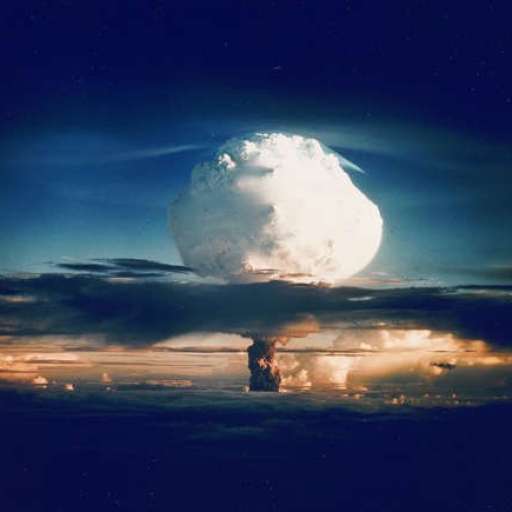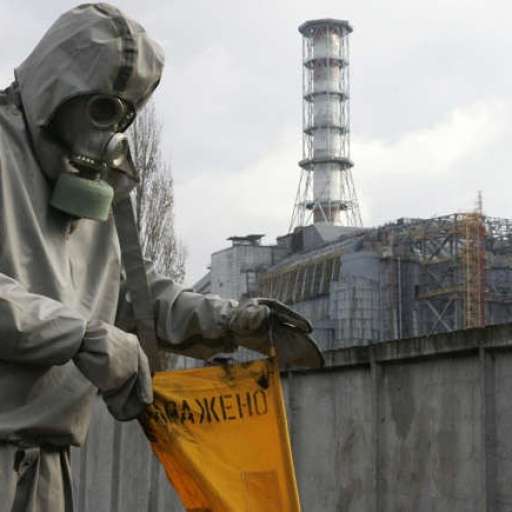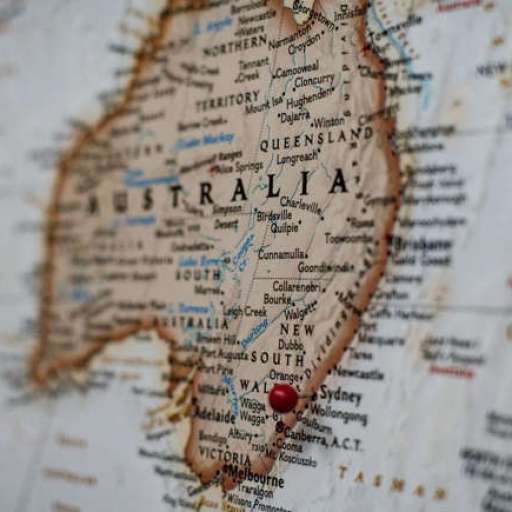The safest countries to be in during a nuclear apocalypse
A looming threat
©Provided by The Daily Digest
More than three years into Russia’s war in Ukraine, experts still warn of the potential threat of the use of nuclear weapons, with Moscow having said in April that they “reserve the right” to use them in the event of an aggression from the West.
Devastating consequences
©Provided by Showbizz Daily (English)
Any nuclear conflict would have a huge range of devastating consequences, from initial deaths in the direct blasts to the lingering effects of radiation, environmental pollution and famine.
Survivors even in the most severe scenario
©Provided by The Daily Digest
Nevertheless, there would likely be pockets of survivors around the planet, even in the most severe scenario, scientists say.
The best chance of survival
©Provided by The Daily Digest
And of course, those in the most resilient nations would stand the best chance of avoiding a pre-industrial collapse. ¿Can you guess which is the safest country to be in in case of nuclear warfare?
Australia: the safest country
©Provided by The Daily Digest
Researchers have found that Australia, followed by its neighbour New Zealand, would be the best placed country to survive a nuclear winter and help reboot a collapsed human civilisation.
Iceland, Salomon and Vanuatu Islands
©Provided by The Daily Digest
It was revealed in a study published in the journal Risk ******* ysis, that also points to Iceland, Solomon Islands and Vanuatu as safe places to survive a nuclear apocalypse.
Safe for an ‘abrupt sunlight-reducing catastrophe’
©Provided by The Daily Digest
The aforementioned island countries are capable of producing enough food for their populations after an “abrupt sunlight‐reducing catastrophe” such as a nuclear war, super volcano or asteroid strike, according to the study.
The study compared 38 island countries
©Provided by The Daily Digest
The authors compared 38 island countries on 13 factors they said could predict success as a post-apocalyptic survival state.
Factors: food production, energy self-sufficiency…
©Provided by The Daily Digest
The factors include food production, energy self-sufficiency, manufacturing and the disaster’s effect on climate, among others.
Australia and New Zealand: big agricultural producers
©Provided by The Daily Digest
Australia and New Zealand, both robust agricultural producers and tucked away from the likely sites of northern hemisphere nuclear fallout, topped the list, with Australia performing best overall.
Australia could feed tens of millions more
©Provided by The Daily Digest
“Australia’s food supply buffer is gigantic,” the study reads, “with potential to feed many tens of millions of extra people.”
Why Australia is at the top of the list
©Provided by The Daily Digest
Australia’s relatively good infrastructure, vast energy surplus, high health security and defence budget all aided in putting it at the top of the list.
Ties with the UK and US makes it more likely to become a target
©Provided by The Daily Digest
Australia did have one major factor working against it, however: its relatively close military ties with the UK and US made it more likely to become a target in a nuclear war against Russia.
New Zeland’s nuclear-free status is an advantage
©Provided by The Daily Digest
In this area, New Zealand displayed some advantages, the authors said, with its longstanding nuclear-free status.
Cushioned from extreme temperature
©Provided by The Daily Digest
Its resilience in the event of an abrupt drop in global temperature prompted by a period of darkness (everywhere in New Zealand is relatively close to the ocean, cushioning it from extreme temperature) would also help.
The Philippines, Mauritius, Indonesia
©Provided by The Daily Digest
Other island countries, such as The Philippines, Mauritius and Indonesia would be able to produce enough food in such a crisis, according to the study.
Social instability puts resilience in doubt
©Provided by The Daily Digest
However, their history of corruption and social instability put their resilience in doubt, according to the authors of the study.
63% of the world’s population would die of famine
©Provided by The Daily Digest
More than 5 billion people, roughly 63% of the world's current population, would die of famine in the aftermath of a full-scale nuclear war, according to a 2022 study.
97% reduction of food production
©Provided by The Daily Digest
In fact, there would be a 97% reduction of food production in China, France, Russia, the United Kingdom, and the United States.
The importance of food self-suffiency
©Provided by The Daily Digest
That’s why food self-sufficiency is one of the most important factors, according to the authors of the study, who explain that food trade could be greatly affected by a widespread technological collapse.
Widespread technological collapse
©Pr
A looming threat
©Provided by The Daily Digest
More than three years into Russia’s war in Ukraine, experts still warn of the potential threat of the use of nuclear weapons, with Moscow having said in April that they “reserve the right” to use them in the event of an aggression from the West.
Devastating consequences
©Provided by Showbizz Daily (English)
Any nuclear conflict would have a huge range of devastating consequences, from initial deaths in the direct blasts to the lingering effects of radiation, environmental pollution and famine.
Survivors even in the most severe scenario
©Provided by The Daily Digest
Nevertheless, there would likely be pockets of survivors around the planet, even in the most severe scenario, scientists say.
The best chance of survival
©Provided by The Daily Digest
And of course, those in the most resilient nations would stand the best chance of avoiding a pre-industrial collapse. ¿Can you guess which is the safest country to be in in case of nuclear warfare?
Australia: the safest country
©Provided by The Daily Digest
Researchers have found that Australia, followed by its neighbour New Zealand, would be the best placed country to survive a nuclear winter and help reboot a collapsed human civilisation.
Iceland, Salomon and Vanuatu Islands
©Provided by The Daily Digest
It was revealed in a study published in the journal Risk ******* ysis, that also points to Iceland, Solomon Islands and Vanuatu as safe places to survive a nuclear apocalypse.
Safe for an ‘abrupt sunlight-reducing catastrophe’
©Provided by The Daily Digest
The aforementioned island countries are capable of producing enough food for their populations after an “abrupt sunlight‐reducing catastrophe” such as a nuclear war, super volcano or asteroid strike, according to the study.
The study compared 38 island countries
©Provided by The Daily Digest
The authors compared 38 island countries on 13 factors they said could predict success as a post-apocalyptic survival state.
Factors: food production, energy self-sufficiency…
©Provided by The Daily Digest
The factors include food production, energy self-sufficiency, manufacturing and the disaster’s effect on climate, among others.
Australia and New Zealand: big agricultural producers
©Provided by The Daily Digest
Australia and New Zealand, both robust agricultural producers and tucked away from the likely sites of northern hemisphere nuclear fallout, topped the list, with Australia performing best overall.
Australia could feed tens of millions more
©Provided by The Daily Digest
“Australia’s food supply buffer is gigantic,” the study reads, “with potential to feed many tens of millions of extra people.”
Why Australia is at the top of the list
©Provided by The Daily Digest
Australia’s relatively good infrastructure, vast energy surplus, high health security and defence budget all aided in putting it at the top of the list.
Ties with the UK and US makes it more likely to become a target
©Provided by The Daily Digest
Australia did have one major factor working against it, however: its relatively close military ties with the UK and US made it more likely to become a target in a nuclear war against Russia.
New Zeland’s nuclear-free status is an advantage
©Provided by The Daily Digest
In this area, New Zealand displayed some advantages, the authors said, with its longstanding nuclear-free status.
Cushioned from extreme temperature
©Provided by The Daily Digest
Its resilience in the event of an abrupt drop in global temperature prompted by a period of darkness (everywhere in New Zealand is relatively close to the ocean, cushioning it from extreme temperature) would also help.
The Philippines, Mauritius, Indonesia
©Provided by The Daily Digest
Other island countries, such as The Philippines, Mauritius and Indonesia would be able to produce enough food in such a crisis, according to the study.
Social instability puts resilience in doubt
©Provided by The Daily Digest
However, their history of corruption and social instability put their resilience in doubt, according to the authors of the study.
63% of the world’s population would die of famine
©Provided by The Daily Digest
More than 5 billion people, roughly 63% of the world's current population, would die of famine in the aftermath of a full-scale nuclear war, according to a 2022 study.
97% reduction of food production
©Provided by The Daily Digest
In fact, there would be a 97% reduction of food production in China, France, Russia, the United Kingdom, and the United States.
The importance of food self-suffiency
©Provided by The Daily Digest
That’s why food self-sufficiency is one of the most important factors, according to the authors of the study, who explain that food trade could be greatly affected by a widespread technological collapse.
Widespread technological collapse
©Pr
4 months ago





